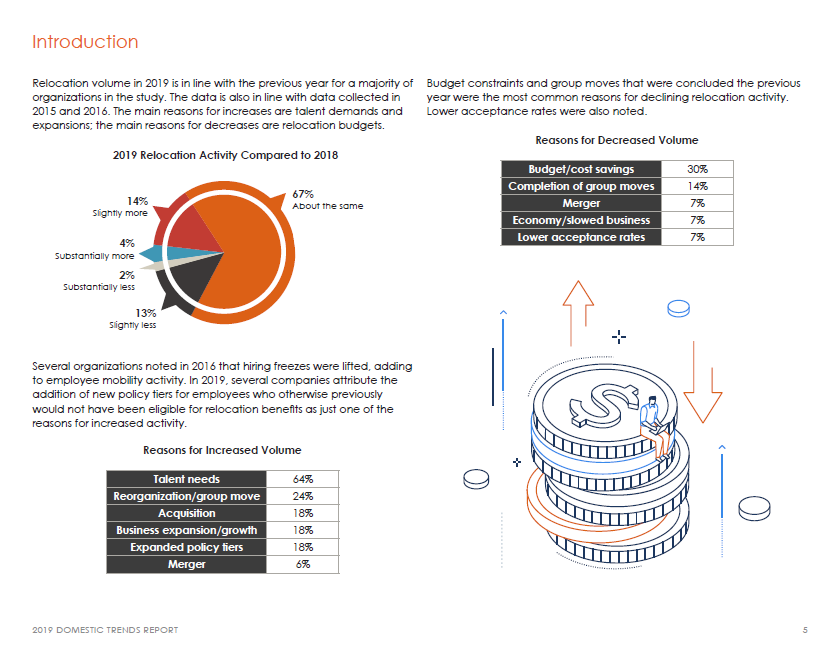Domestic Trends Report
Aires is pleased to release the 2019 Domestic Trends Report, our 10th anniversary edition. Over the past 10 years (and more) we have seen some large and small changes to mobility programs.
Since our last report in 2016, we have witnessed the impact of the Tax Cuts and Jobs Act of 2017 (which suspended the excludability of household goods and some final travel expenses, increasing companies’ tax gross-up expenses) and are anxiously awaiting 2025 to know if things will revert to their pre-2018 tax treatment or remain the same.
We have also seen home prices continue to appreciate and are once again seeing bubble effects on West Coast housing.
We are now talking about the next generation, Generation Z, watching closely to see what impact they have on employee mobility beyond the impact that Millennials created.
Relocation policies must support an organization’s talent objectives and bring together Human Resources, Managers, Recruiting, Talent Acquisition, and other key stakeholders. Relocation teams are being challenged to stay within cost constraints while also attracting the best talent, concepts that are often at opposing ends of the cost spectrum.
These forces, among many others, impact the employee mobility industry and the decisions employers face when placing talent where and when it is needed – in the most cost-effective and compliant manner while offering employees competitive packages and opportunities that make a move worthwhile.
Each year, various studies are conducted to benchmark domestic relocation programs. And each year, a few new trends emerge, and changes take place. The following pages of this report illustrate current benchmarking and best practices of employee mobility programs from organizations of all sizes and industries. The report includes highlighted differences between findings from 2016.
Below is a sneak peek of the Domestic Transfer Trends Report.

